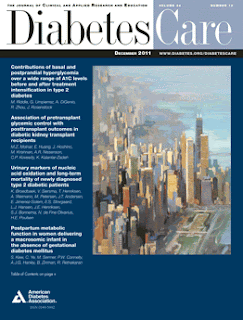In the U.S., diabetes-related mortality is found to be much higher among blacks than that among whites. Why this can happen? Because of different insurance coverage among these two groups? Or because of different access to health care, or any other reasons exist? No matter what factors can cause the disparities in diabetes, if they are indeed the dominant basis for the disparities, then we have reasons to believe that such disparities should not be present when access to care is relatively uniform.
Is that true?
So as to test this hypothesis, a recent study approved by the Emory University Institutional Review Board is conducted by comparing glucose and A1C (i.e. a common blood test used to diagnose diabetes) levels in veterans, who receive consistent follow-up care at medical centers in the southeastern U.S. In this study, 1456 blacks and 2624 white veterans who met certain criteria are analyzed. Researchers have found that differences in A1C between blacks and whites were generally small and within the range associated with race, no difference in underlying glucose levels. However, even in the Veteran Administrations, blacks had higher A1C levels than whites when the diagnosis was made and when drug treatment was initiated, and at these times, the differences in A1C reflected underlying differences in glucose levels as well. In other words,
glucose levels are generally comparable in blacks and whites except at the times of diagnosis and initiation of drug treatment, when glucose levels are higher in blacks.
What we get?
This study includes a large number of patients and the information is collected from multiple medical centers across states in the southeastern US, hence its results to a large extent is reliable. That is to say, if other patients are found to have consistent follow-up care similar to those in the present study, the results can be applied!
However, people must be very careful in applying the results because Limitations also exist! In this study, sample patients were largely males and the sample is not a national sample. So if different results are got by studying patients from others states, don’t be surprised! Also the measurement of A1C and glucose levels is not uniform, which indicates the results may be biased. We should also recognize that care in the Veteran Administrations is not necessarily “free”, since some categories of eligibility require a copayment for pharmaceuticals or services received. Although such requirements are stratified according to service connection, income, and insurance coverage, the impact of differences in financial status is not fully eliminated. Therefore, understanding the basis for such remaining disparities may be important to improve the health of blacks in the U.S., a health care system with structure and organization similar to that in the Veteran Administrations may also contribute importantly to relieving disparities in health.
Jing Yang is a first year PhD student in Biostatistics and Bioinformatics at Emory University. She loves travelling, skiing and is a huge fan of Alan Rickman (Prof Snape! Huhu~~~~)
Reference: Twombly, J.G., Long,Q., Zhu, M., Wilson, P.W.F., Narayan, V.K.M., Fraser, L-A., Brian C. Webber, B.C., and Phillips, L.S. Diabetes care in black and white veterans in the southeastern United States.
Diabetes Care
, 33(5): 958-63, 2010. 
Thanks for the information. It looks like the disparities found elsewhere are minimized in the VA population. I am interested to know about similar studies that have been completed looking at other conditions.
ReplyDeleteThe word "disparities" always throws me off...I feel like it's one of those public health buzz words with a meaning that is not quite understood. How would you define it?
ReplyDeleteAlso, always happy to read about research of the VA populations -- sometimes it seems like they're one of the forgotten "vulnerable populations."
For Dr. Freedman: While your class is not a class in writing Academic English, I would suggest you try to find a way that students whose first language is not English can get some feedback and make corrections and changes before posting their blog
ReplyDeleteFor Jing: (1) The meaning of the title and its relationship to the body of the blog aren't that clear to me.
(2) As a non-professional, I believe that the hypothesis behind the study needs to be more clearly stated.
(3) While it is important to note the limitations of the study, I would guess that two-fifths of the blog is devoted to them while only a few lines are devoted to reporting the results of the study.
I agree with all of the comments above. Also, for a non public health audience, I'm left wondering what they should DO with this information. How does this apply to their lives or of the lives people they know?
ReplyDeleteLast, can you think of a picture that would interest a non-public health person? Most non-public health people won't or can't read this journal (too hard to read or don't have access to it).
All that said, it is interesting research and worth using as the basis for a blog. The importance is finding a way to CONNECT to the average person and show them why this is important to them.